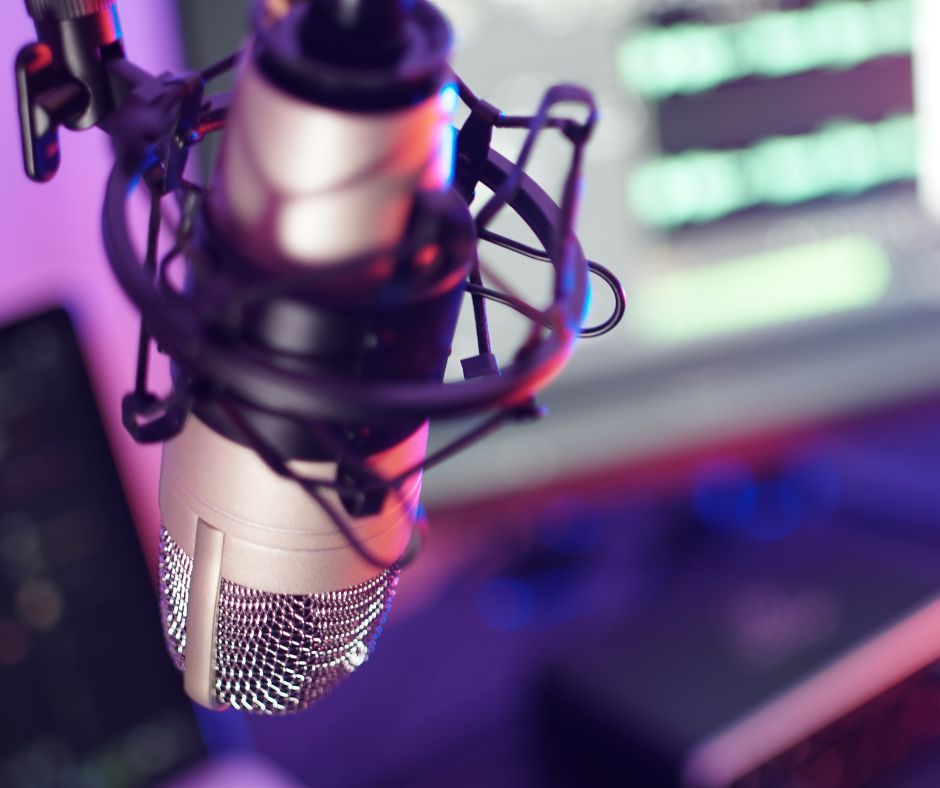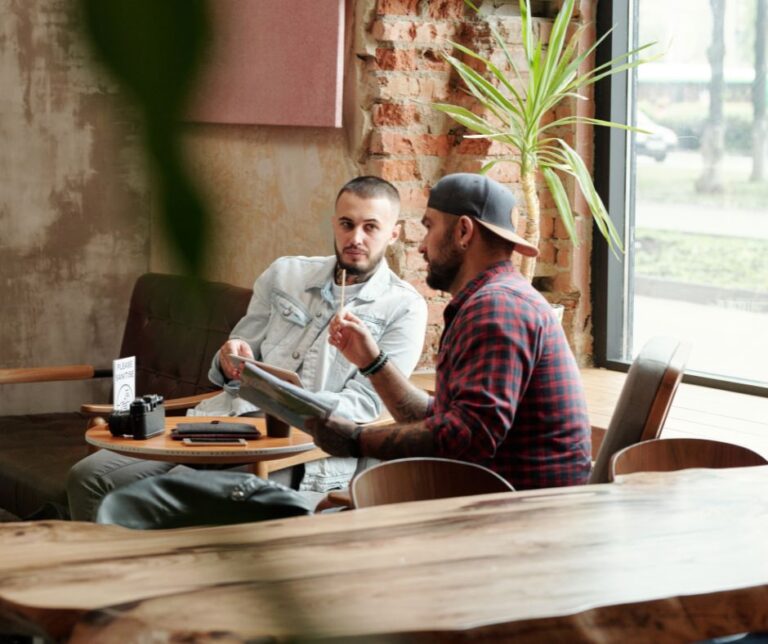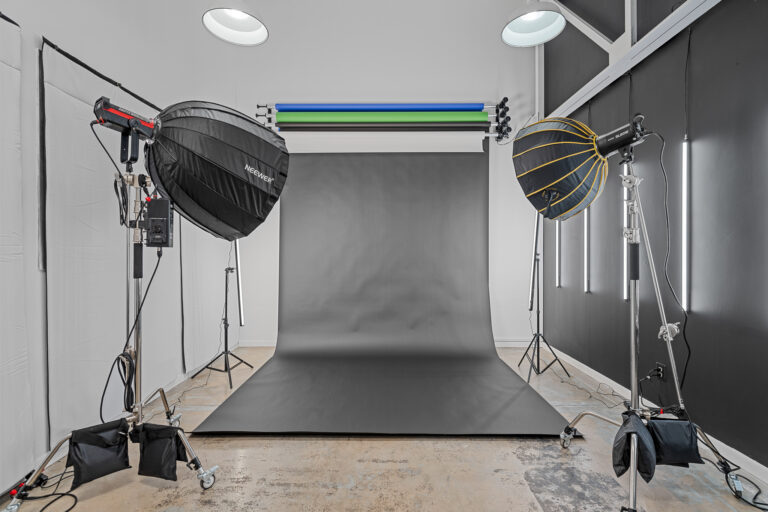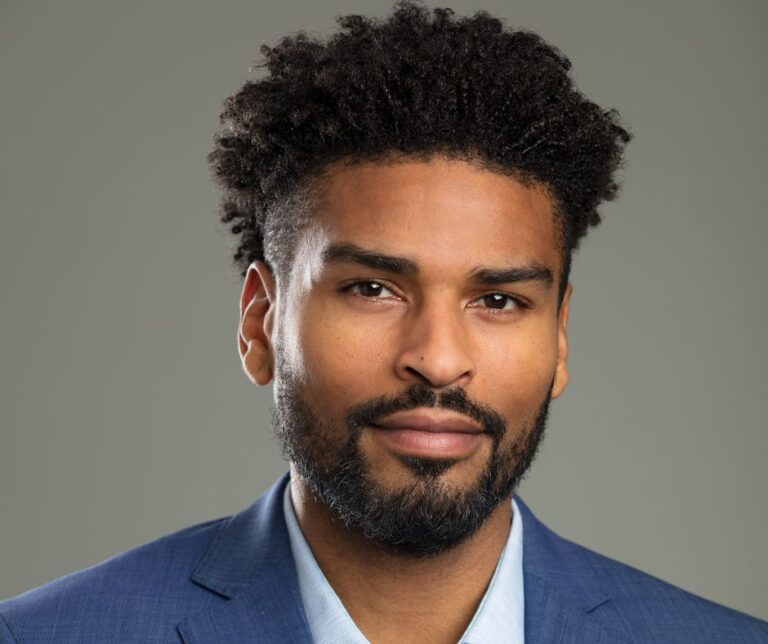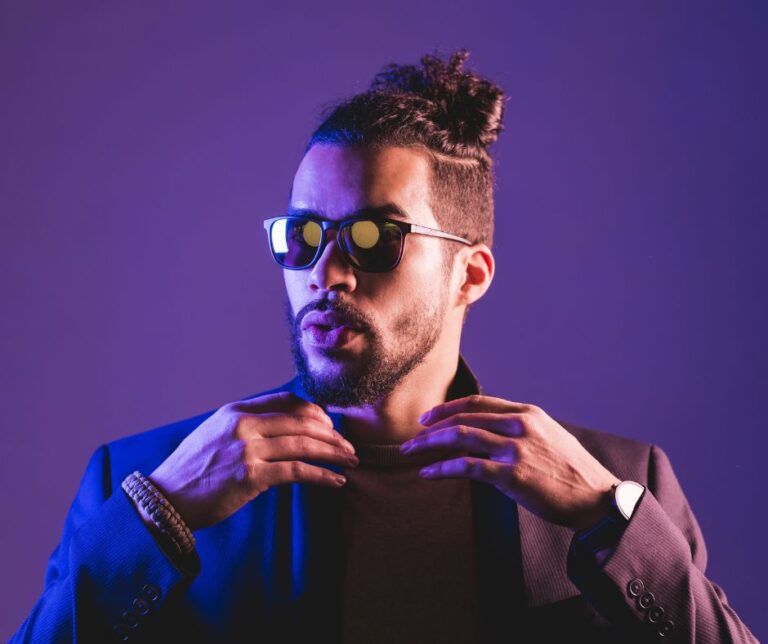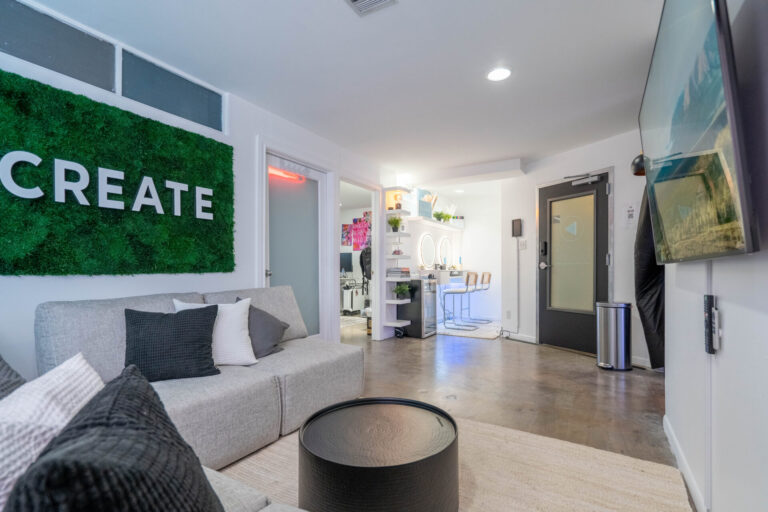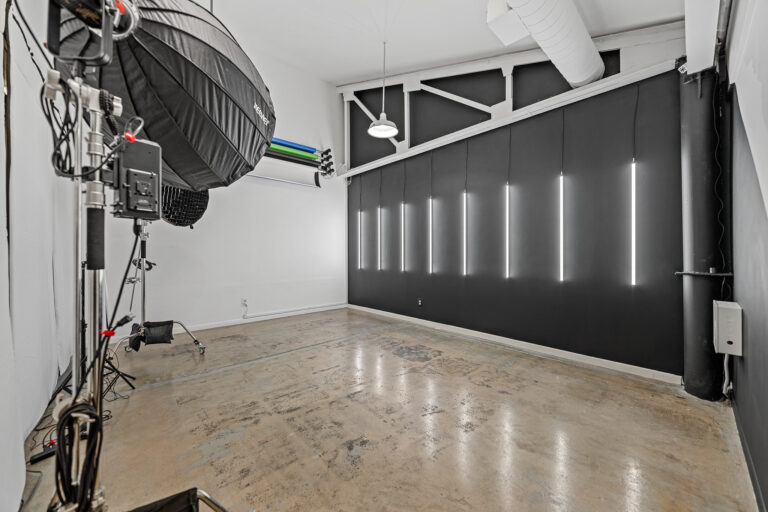Tips for Designing a Modern and Efficient Podcast Studio
A podcast studio is a dedicated space for creating audio content. It typically consists of a microphone, headphones, a computer and other equipment necessary to record and edit audio. The importance of having a well-designed podcast recording studio cannot be overstated. A good podcast studio design should be comfortable, efficient, and provide the right environment for producing good sound quality. This article will provide an overview of the steps needed to create a modern and efficient podcast studio design.
Book Your Next Project With Us
Boost your creative process at Media Pouch Studios – your all-in-one hub for creation and growth
Research and Planning
The research and planning stage lays the groundwork for your podcast studio design.
Identifying Your Needs and Goals
During this stage, you should determine the type of audio content you want to produce, how many people will be involved, and what equipment is necessary. Knowing your needs and goals before making any purchases is essential for creating an effective podcast studio design.
Researching Equipment and Software
Researching different types of recording equipment, software programs, and other tools is necessary to ensure that you get the right combination of products for your podcast studio setup. Researching and understanding the features of each product will help you make an informed decision.
Budgeting and Cost Considerations
It is important to determine a budget before making any major purchases or investments. Knowing what your budget can accommodate will help you decide which equipment and software are best suited for your podcast studio setup.
Finding a Suitable Location
Finding the right location for your podcast studio setup is also essential. You want a comfortable space with minimal distractions, good acoustics, and adequate seating for all involved in the recording process.
Studio Layout and Design
Once you have identified the perfect place for your podcast studio setup, it’s time to start planning the layout and design.
Choosing the Right Room Size and Shape
The size of the room you choose will determine how much equipment can fit in it. If you have a smaller space, think carefully about what types of furniture, equipment, and other items should be included to maximize efficiency without overcrowding.
Acoustic Treatment and Soundproofing
Acoustic treatment and soundproofing are essential for producing good audio quality. It is important to properly insulate walls and ceilings to reduce external noise and create an ideal recording environment.
Lighting Design
When designing your podcast studio’s lighting setup, consider what type of atmosphere you want to create for your recordings. Your podcast sound quality and lighting system goes hand-in-hand, so make sure you have adequate resources to invest in both.
Furniture and Equipment Placement
It’s essential to plan out where you will place all of your recording equipment, furniture, and other items in the professional podcast studio setup. Make sure that everything is within close reach of those involved in the recording process for increased efficiency.
Audio Equipment

When it comes to recording audio, choosing the right type of equipment is key.
Microphones: Types and Recommendations
Different types of microphones produce different results. It’s important to choose the right kind for your particular needs. Consider condenser mics for recording vocals, dynamic mics for capturing instruments, and lavalier mics for podcasting interviews.
Audio Interfaces: Types and Recommendations
A technical audio facility will be necessary when connecting microphones or other sources to your computer and recording software. Different interfaces offer a variety of features so you should look into which one best suits your needs.
Headphones and Speakers: Types and Recommendations
It is important to have headphones as well as speakers in your podcast studio design to ensure that everyone can hear the recordings. Make sure to choose headphones and speakers with good sound quality and adjustable volume knobs.
Mixing Consoles: Types and Recommendations
If you want to mix multiple audio signals for a single recording, then a mixing console may be necessary. There are many different types of consoles available, so it’s important to research which one is best suited for your needs.
Computer and Software
Having the right computer specs and software will help ensure that you can create high-quality audio content without any issues.
Computer Specs and Requirements
The type of computer you use will also influence how much data it can process at once, so make sure to check the specs and requirements before making any purchases.
Editing Software: Types and Recommendations
The software you choose for editing your audio recordings should be intuitive and user-friendly. Popular podcast editing software include Pro Tools and Adobe Audition.
Plugins and Add-Ons: Types and Recommendations
Adding plugins or add-ons to your editing software can help enhance its features. Some popular plugins include Waves Audio Suite, iZotope RX 6, FabFilter Pro Q 2, and UAD Plugins, among others.
Backup and Storage Solutions
Having a reliable backup system is essential to protect your audio files in case of a power outage or other unexpected issues such as data loss. Popular storage options include external hard drives, cloud storage, and DVD/CD-ROMs.
Live Streaming and Video Recording
Live streaming and video recording have become increasingly popular for podcasting.
Live Streaming Setup: Hardware and Software Requirements
When setting up your live streaming setup, you will need to choose the right type of podcast equipment such as cameras, microphones, audio interfaces, computer specs, and more. You will also need software such as OBS Studio or Streamlabs OBS for broadcasting your stream on platforms like Twitch or YouTube.
Video Recording Setup: Hardware and Software Requirements
When setting up for video recording purposes, it is important to consider the same podcast studio equipment mentioned above but with an additional focus on lighting design and background set-up. Video editing software such as Adobe Premiere Pro can be used to edit the footage.
Camera and Lighting Recommendations
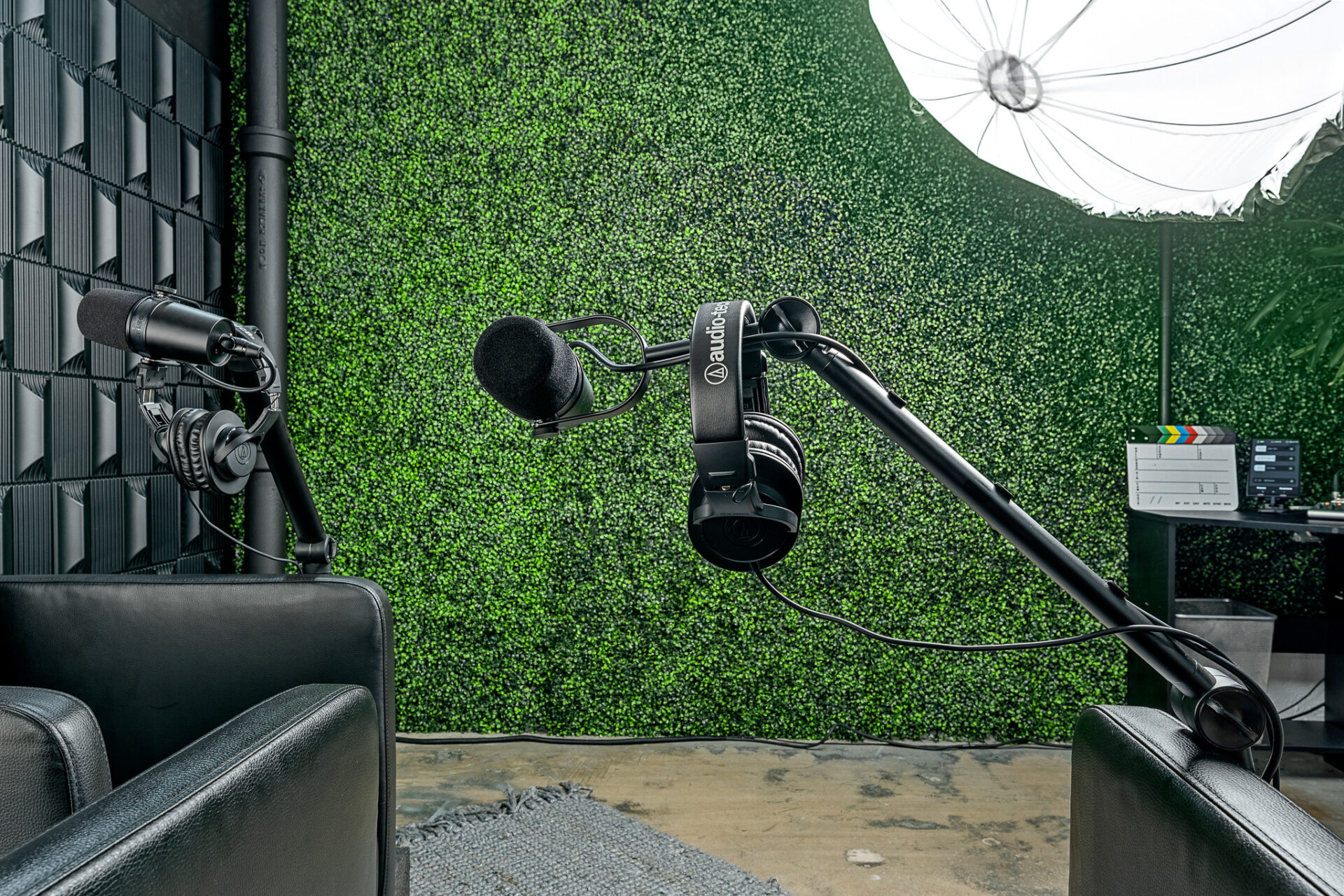
Choosing the right camera can be tricky since it all depends on the type of video recording you’re doing. DSLR cameras are good for general purposes while mirrorless or action cameras work best for vlogging or extreme sports videos. When it comes to lighting, LED panels are a good choice as they provide soft, ambient light without taking up too much space.
Background and Set Design
When creating a background set for your podcast video recordings, consider what will make your audience feel comfortable and engage with the content in the best way possible. Adding visuals such as images or text could help draw attention to certain topics within the conversation.
Workflow and Best Practices
By having a well-defined podcasting workflow and following these best practices, you can ensure the success of your project.
Pre-Production Planning and Preparation
Having a plan before recording is essential for creating high-quality content. This includes researching topics, gathering guests or co-hosts, and finding interesting stories to talk about.
Recording and Editing Workflow
Once you are ready to start recording, make sure to have all the necessary equipment on hand such as microphones and headphones. After each session, review the audio files for any errors or undesirable noise that need to be removed during editing.
Hosting and Distribution Workflow
After your recordings are edited, upload them onto a hosting platform like Podbean and distribute them across various podcasting platforms like Apple Podcasts and Spotify.
Collaboration and Communication Best Practices
Working with a team of individuals on a project can be difficult, but having clear communication, roles, deadlines, and expectations can help keep everyone on track.
Book Your Next Project With Us
Boost your creative process at Media Pouch Studios – your all-in-one hub for creation and growth
Troubleshooting and Maintenance
From time to time, issues may arise that need to be addressed to ensure that everything is working properly.
Common Issues and Solutions
Common issues include compatibility problems between hardware/software and audio distortion or clipping. Refer to the manufacturer’s website or contact customer service to diagnose and solve any potential issues.
Regular Maintenance Tasks
It is important to regularly check the quality of your audio recordings and equipment, as well as back up valuable data regularly.
Upgrades and Future-Proofing Considerations
When purchasing new hardware or software, research what features are available now and shortly so you can ensure that your setup is up-to-date.
Disaster Recovery and Backup Plans
Having a backup plan in place is essential in case of an unexpected event such as a data loss or a sudden interruption of power. Creating copies of all audio files, hosting platforms, mailing lists, etc. can help ensure that you won’t lose any data.
Conclusion
Creating a podcast studio requires careful consideration of the planning, equipment, and workflow involved. Following best practices can help ensure the success of your project and make sure that it is engaging, professional-sounding, and future-proof. With some patience and dedication, anyone can create their own podcast.
Pouch6 Studios is your go-to podcast studio in Austin, Texas for any podcasting needs. As a smart podcast studio, you can take advantage of our smart technology and tools to record, edit and publish. From pre-production planning to recording, editing and hosting, Pouch6 Studios will provide you with the tools and support to produce your podcast the right way. Contact us today to get started!

